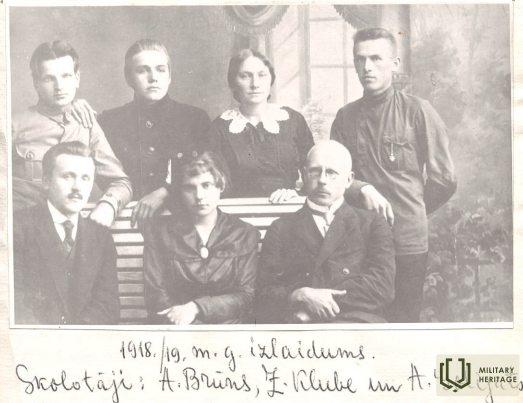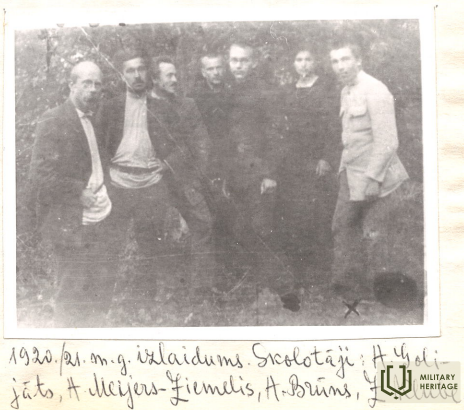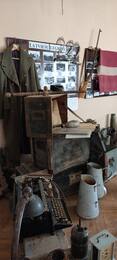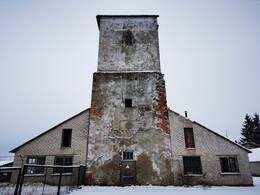Как люди из латвийского правительства одурачили соратников пампальских большевиков
Бывший директор пампальской школы (до 1959 г.) Альфред Брунс издал впечатляющую книгу об истории пампальской школы и исторических событиях вокруг нее с подлинными фотографиями, в которой А. Брунс описывает события Великой Отечественной войны. Независимость в Пампали, подробно описывая события, в которых участвовали как латышские государственные деятели, так и сторонники большевиков, действия немецкой армии и т. д.
[…] 1919 г.
В 1919 году, около 6 января, члены латвийского правительства и Народного Совета разными путями бежали в сторону Лиепаи, минуя большевистские ручьи, текущие в сторону Венты.
Бывший наш ученик (1914 г. [выпускник школы]) Жанис Куммерманис организовал в имении Пампали группу большевиков, которая уже управляла Пампали за несколько дней до появления советских войск в Пампали.
Пампалниекс Фрицис Вецпуисис - владелец домов Стунгури - начальник отдела военного строительства правительства Улмани - офицер с некоторыми другими латвийскими государственными служащими, отступая в Лиепаю, въехал в "Стунгурис" на хорошем, реквизированном государством лимузине. ночевать. Группа пампальских партизан, проинформированная об этом, немедленно прибыла в «Стунгурос», чтобы отвезти лимузин в Пампали. Старик не сопротивлялся - пока брал, потому что дальше все равно не ехать, бензин кончился до последней капли. Простые слуги поместья поверили и отправились в Пампалии с таким посланием. Выяснив, что там за официальный Векпуисис, ранним утром выехали на 4-х или 6-ти лучших лошадях для передачи машины. Ни лимузина, ни Векпуиса, ни других правительственных чиновников в «Стунгуросе» не нашли.
В архиве есть известие, что Фрицис Вецпуисис, 1890 года рождения, дом Стунгури, был депортирован 14 июня 1941 года.
Уровень/Уровень: Номер дела/номер: 20035
==================
Бывший директор школы Пампали (до 1959 года) Альфред Брунс напечатал от руки впечатляющую книгу об истории школы Пампали и исторических событиях вокруг нее с подлинными фотографиями. Книга находится в Пампали вместе с Артуром Хартмани, который владеет впечатляющей частной коллекцией различных древностей и артефактов времен Второй мировой войны, найденных в окрестностях Пампали.
Латвийский государственный архив (rtu.lv)
www.itl.rtu.lv/LVA/index3.php?id=9009&kods=14072&vien=5
Связанная хронология
Связанные объекты
Церковь Пампали и стены разрушенного дома
Пампали – поселок в Пампальской волости Салдусского края, центр волости находится на берегу реки Заняс и ее притока Абрупе, в 27 км от уездного центра Салдус и в 147 км от Риги. Поселение образовалось вокруг центра поместья Пампали после аграрной реформы. В 1933 году Пампалису был присвоен статус густонаселенного места.
Боевые действия на подступах к Пампали начались 21 ноября 1944 г., когда советская 4-я ударная армия, форсировав Венту, начала наступление в направлении Салдуса. К 24 ноября ситуация стабилизировалась и линия фронта оставалась неизменной до 21 декабря.
21 декабря 1944 года началось так называемое 3-е Курземское сражение, в ходе которого 4-я ударная армия 1-го Прибалтийского фронта силами 4 стрелковых корпусов (12 стрелковых дивизий) и 3-го гвардейского механизированного корпуса нанесла удар в направлении Салдуса на соединение там с частями 2-го Прибалтийского фронта. Немецкая 132-я пехотная дивизия, 1-й батальон 436-го гренадерского полка которой укрепился в районе усадьбы и церкви, оборонялась в районе Пампали.
Наступление на Пампалии осуществлялось при поддержке массированного артиллерийского огня 357-й и 145-й стрелковых дивизий 1-го стрелкового корпуса при поддержке 39-й гвардейской танковой бригады. В первые 24 часа боя гарнизон Пампали, которым командовал командир 14-й (противотанковой) роты 436-го гренадерского полка капитан Эберард Коллль, был окружен и практически уничтожен в ожесточенных боях.
Так как Пампали располагался прямо на линии фронта, все постройки подверглись артиллерийскому обстрелу и сегодня практически не сохранились.










